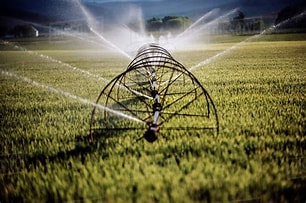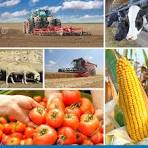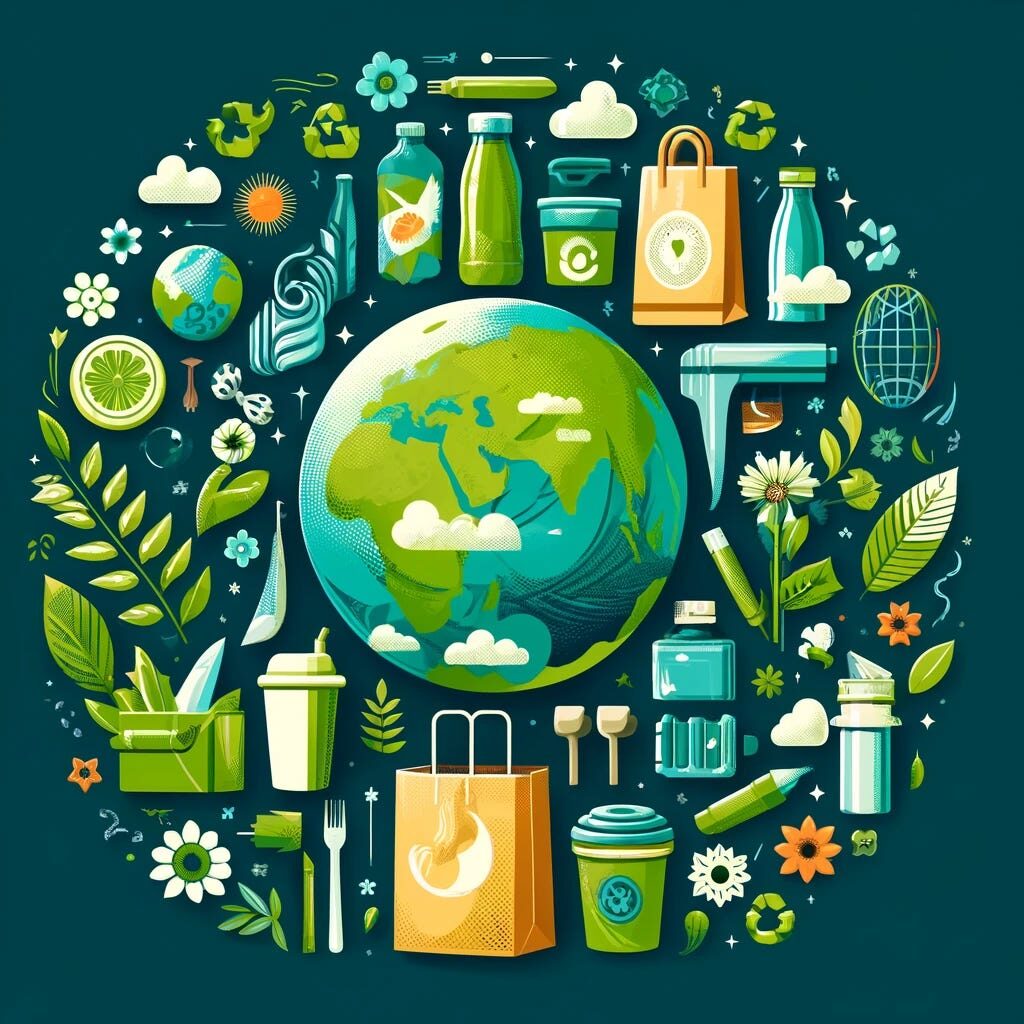Types of Irrigation Systems Commonly Used Around the World
Introduction
Irrigation is the lifeblood of agriculture, ensuring that crops receive the necessary water to thrive, even in areas with limited or unreliable rainfall. As the world’s population continues to grow, the demand for food increases, making efficient irrigation systems more crucial than ever. In this comprehensive article, we’ll explore the various types of irrigation systems commonly used around the world, their advantages, and their suitability for different agricultural setting
Imagine a world where crops could grow without the need for human intervention. While that may be a utopian dream, the reality is that irrigation has been a crucial part of agriculture for centuries. From ancient civilizations that relied on complex canal systems to modern farmers using high-tech sprinklers, the evolution of irrigation has been a testament to human ingenuity and the drive to produce more food.In this article, we’ll delve into the world of irrigation, examining the most commonly used systems and their unique characteristics. Whether you’re a seasoned farmer looking to optimize your operations or a curious individual interested in the science behind food production, this guide will provide you with valuable insights into the fascinating world of irrigation.

1. Surface Irrigation
What is Surface Irrigation?

Surface irrigation, also known as gravity irrigation, is one of the oldest and most widely used methods of irrigation. It involves applying water to the soil surface and allowing it to infiltrate the soil through gravity. Surface irrigation can be further divided into several subtypes, including:
- Furrow Irrigation: Water is applied to small, parallel channels between crop rows, allowing it to infiltrate the soil laterally.
- Border Irrigation: Water is applied to strips of land separated by small ridges, allowing it to flow down the slope.
- Basin Irrigation: Water is applied to level areas surrounded by dikes, creating a pond-like effect.
Advantages of Surface Irrigation
- Low Cost: Surface irrigation systems are generally less expensive to install and maintain compared to other methods.
- Simplicity: The technology behind surface irrigation is relatively simple, making it accessible to farmers with limited resources.
- Suitability for Various Crops: Surface irrigation can be used for a wide range of crops, including grains, vegetables, and orchards.
Disadvantages of Surface Irrigation
- Water Inefficiency: Surface irrigation can result in significant water losses due to evaporation, runoff, and deep percolation.
- Labor Intensive: Maintaining and managing surface irrigation systems often requires significant labor input.
- Potential for Soil Erosion: Improper management of surface irrigation can lead to soil erosion, especially on sloping lands.
2. Sprinkler Irrigation
What is Sprinkler Irrigation?
Sprinkler irrigation systems use a network of pipes and sprinklers to apply water to the soil surface in a manner similar to natural rainfall. Water is pumped through the pipes and distributed through sprinklers, which can be stationary or mobile. Sprinkler irrigation can be further divided into several subtypes, including:
- Center Pivot Irrigation: A circular irrigation system that rotates around a central pivot, applying water to a circular area.
- Lateral Move Irrigation: A system that moves laterally across a field, applying water to a rectangular area.
- Solid Set Irrigation: A system of permanently installed sprinklers that can be operated as needed.
Advantages of Sprinkler Irrigation
- Water Efficiency: Sprinkler irrigation systems can apply water more efficiently than surface irrigation, reducing water losses.
- Adaptability: Sprinkler systems can be used on a wide range of soil types and topographies, including sloping lands.
- Versatility: Sprinkler irrigation can be used for a variety of crops, including row crops, orchards, and vineyards.
Disadvantages of Sprinkler Irrigation
- Energy Consumption: Sprinkler irrigation systems require significant energy input to pump water through the pipes and sprinklers.
- Susceptibility to Wind: Strong winds can distort the water distribution pattern and reduce the efficiency of sprinkler irrigation.
- Potential for Foliar Disease: Wetting the foliage can create an environment conducive to the development of certain plant diseases.
3. Drip Irrigation

What is Drip Irrigation?
Drip irrigation, also known as trickle irrigation, is a highly efficient method of applying water directly to the root zone of plants. Water is delivered through a network of valves, pipes, tubing, and emitters placed at regular intervals along the irrigation lines. Drip irrigation can be further divided into several subtypes, including:
- Surface Drip Irrigation: Emitters are placed on the soil surface, delivering water directly to the root zone.
- Subsurface Drip Irrigation: Emitters are buried below the soil surface, reducing water losses due to evaporation.
- Micro-Irrigation: A low-pressure, low-volume system that delivers water through small emitters or drippers.
Advantages of Drip Irrigation
- Water Efficiency: Drip irrigation can reduce water usage by up to 60% compared to other irrigation methods.
- Nutrient Management: Fertilizers and other soil amendments can be easily applied through the drip system, improving nutrient availability for plants.
- Weed Control: Drip irrigation keeps the soil surface dry, reducing weed growth and the need for manual weeding.
Disadvantages of Drip Irrigation
- High Initial Cost: The installation of a drip irrigation system can be expensive, especially for large-scale operations.
- Clogging: Emitters can become clogged by mineral deposits, organic matter, or small organisms, requiring regular maintenance and cleaning.
- Limited Root Zone: Drip irrigation wets a limited area of the soil, which can restrict root growth and development.
4. Subsurface Irrigation

What is Subsurface Irrigation?
Subsurface irrigation, also known as sub-irrigation, involves applying water directly to the root zone of plants through a network of buried pipes or tiles. In this system water is delivered to the soil through small openings or emitters in the pipes, allowing it to move upward through the soil profile by capillary action. Subsurface irrigation can be further divided into several subtypes, including:
- Controlled Drainage: A system that regulates the water table depth by managing the outflow of water from the field.
- Subirrigation: A system that applies water directly to the root zone through a network of buried pipes or tiles.
Advantages of Subsurface Irrigation
- Water Efficiency: Subsurface irrigation can reduce water losses due to evaporation and runoff, improving water use efficiency.
- Reduced Weed Growth: Keeping the soil surface dry can help suppress weed growth, reducing the need for manual weeding.
- Improved Soil Aeration: Subsurface irrigation can improve soil aeration, promoting root growth and nutrient uptake.
Disadvantages of Subsurface Irrigation
- Complexity: Designing and installing a subsurface irrigation system requires specialized knowledge and expertise.
- Potential for Soil Salinization: If the water used for subsurface irrigation contains high levels of salts, it can lead to soil salinization over time.
- Limited Flexibility: Once installed, subsurface irrigation systems are less flexible and more difficult to modify compared to other irrigation methods.
5. Manual Irrigation

What is Manual Irrigation?
Manual irrigation, also known as bucket irrigation, involves applying water to crops using buckets, watering cans, or other hand-held devices. This method is commonly used by small-scale farmers or in home gardens where the area to be irrigated is relatively small.
Advantages of Manual Irrigation
- Low Cost: Manual irrigation requires minimal investment in equipment, making it accessible to farmers with limited resources.
- Flexibility: Manual irrigation allows for precise control over the amount of water applied to each plant, reducing waste.
- Suitability for Small-Scale Operations: Manual irrigation is well-suited for small farms or gardens where the use of mechanized irrigation systems may not be practical or cost-effective.
Disadvantages of Manual Irrigation
- Labor Intensive: Manual irrigation is highly labor-intensive, requiring significant time and effort from the farmer or gardener.
- Inconsistent Water Application: The amount of water applied to each plant may vary depending on the individual applying it, leading to uneven growth and yields.
- Limited Reach: Manual irrigation is limited to the area that can be easily accessed by the farmer or gardener, making it less suitable for large-scale operations.
Choosing the Right Irrigation System
When selecting an irrigation system for your farm or garden, consider the following factors:
- Water Availability: Assess the quantity and quality of water available for irrigation, as well as the reliability of the water source.
- Crop and Soil Characteristics: Consider the specific water requirements of your crops and the characteristics of your soil, such as texture and infiltration rate.
- Energy Availability: Determine the availability and cost of energy required to power your irrigation system, if applicable.
- Labor Availability: Assess the labor resources available for operating and maintaining your irrigation system.
- Economic Considerations: Evaluate the initial cost of installing the irrigation system, as well as the ongoing operating and maintenance costs.
- Environmental Impact: Consider the potential environmental impact of your irrigation system, such as water conservation and energy efficiency.
Read This: Here is a Solution to Nigeria Agricultural Problem
Conclusion
Irrigation is a critical component of modern agriculture, ensuring that crops receive the necessary water to thrive and produce high yields. By understanding the various types of irrigation systems available and their unique characteristics, farmers and gardeners can make informed decisions about which system best suits their needs and resources.
FAQs
1. What is the most water-efficient irrigation system?
Drip irrigation is generally considered the most water-efficient irrigation system, as it delivers water directly to the root zone of plants, reducing losses due to evaporation and runoff.
2. Can I use more than one type of irrigation system on my farm?
Yes, many farmers use a combination of irrigation systems to optimize their operations. For example, they may use sprinkler irrigation for certain crops and drip irrigation for others, depending on their specific needs and resources.
3. How often should I irrigate my crops?
The frequency of irrigation depends on various factors, including the type of crop, soil characteristics, weather conditions, and the stage of plant growth. It’s important to monitor soil moisture levels and adjust your irrigation schedule accordingly to ensure optimal plant growth and yield.
4. Can I use recycled water for irrigation?
Yes, recycled or reclaimed water can be used for irrigation purposes, provided it meets the necessary water quality standards. However, it’s important to ensure that the water is free from contaminants and that it doesn’t contain high levels of salts or other substances that could harm your crops or the environment.
5. What are the environmental benefits of efficient irrigation?
Efficient irrigation systems can help conserve water resources, reduce energy consumption, and minimize the environmental impact of agriculture. By applying water only when and where it’s needed, farmers can reduce water waste, prevent soil erosion, and protect aquatic ecosystems from the effects of excessive runoff and nutrient pollution.

